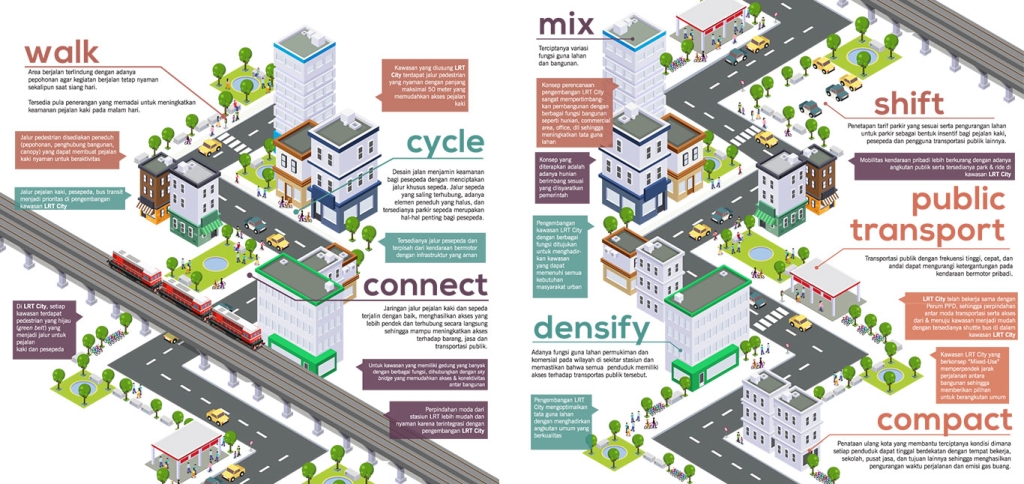In the heart of the United Arab Emirates lies Dubai, a city of opulence, innovation, and remarkable growth. The synergy between urban development and efficient public transportation systems has been pivotal in shaping Dubai’s real estate landscape. In this article, we delve into the profound impact of public transport on Dubai’s real estate sector, highlighting the transformative potential of Transit-Oriented Developments (TODs) in the region.
Enhancing Accessibility and Connectivity
Evolution of Transportation Infrastructure
Dubai’s journey from a desert outpost to a global metropolis is intertwined with the evolution of its transportation infrastructure. The city’s visionary leaders recognized the importance of a well-connected city, leading to the creation of an extensive network of roads, highways, and bridges. The introduction of the Dubai Metro, a driverless, fully automated train system, further elevated the city’s connectivity game. These developments have opened up previously inaccessible areas for real estate development.
Impact on Property Values
Areas situated along Dubai’s efficient transport routes have witnessed a surge in property values. Properties in proximity to metro stations, bus stops, and tram lines have become prime real estate, commanding higher prices due to their enhanced accessibility. The convenience of seamless connectivity has become a significant selling point for properties in the city, attracting both residents and investors.
The Nexus of Urbanization and Public Transport
Dubai’s evolution from a modest trading port to a global metropolis has been accelerated by its strategic urban planning and investment in cutting-edge infrastructure. The interplay between urbanization and public transport has been a key driver of the city’s expansion. A robust transportation network doesn’t merely connect destinations; it shapes them. The growth of residential, commercial, and mixed-use developments around transit hubs has become a hallmark of modern urban planning.
Elevating Accessibility and Convenience
Dubai’s visionary approach to public transportation, epitomized by the Dubai Metro, has redefined convenience and accessibility. The extensive metro network has not only alleviated traffic congestion but has also redefined the dynamics of property valuation. Properties within close proximity to metro stations have witnessed a surge in demand, as residents and businesses recognize the immense value of time saved during daily commutes. The concept of the “last mile connectivity” has been refined to a science, catalyzing the development of pedestrian-friendly zones and micro-communities around transit nodes.
Transit-Oriented Developments: A Paradigm Shift
Transit-Oriented Developments (TODs) have emerged as a transformative urban concept, harmonizing efficient public transport with holistic community planning. TODs integrate various land uses, from residential and commercial to recreational, all centered around transportation hubs. Dubai’s pursuit of TODs aligns seamlessly with its commitment to sustainability, as these developments curtail urban sprawl, reduce carbon footprints, and enhance overall quality of life.

Sustainable Urban Solutions
Dubai’s real estate sector has embraced sustainability as a core tenet, with transit-oriented projects at the forefront of this movement. By promoting mixed-use developments with easy access to public transport, Dubai reduces its dependency on private vehicles, consequently decreasing traffic congestion and air pollution. The integration of energy-efficient technologies and green spaces within TODs further underscores the city’s dedication to a greener future.
Aesthetic and Economic Flourish
Beyond the functional benefits, Dubai’s transit-oriented developments also emphasize aesthetic and economic prosperity. Architecturally striking buildings, lush landscapes, and pedestrian-centric designs create an environment that’s as visually pleasing as it is functional. As these developments become sought-after addresses, property values appreciate, fostering economic growth and urban vibrancy.
Cultivating a Sense of Community
One of the most compelling outcomes of Dubai’s focus on transit-oriented developments is the cultivation of a strong sense of community. TODs foster social interaction, where residents can seamlessly connect with neighbors, explore local businesses, and participate in community events. The emphasis on walkability and communal spaces nurtures a shared sense of belonging, counteracting the anonymity often associated with urban living.
Looking Ahead: The Roadmap for Dubai’s Real Estate
Dubai’s trajectory towards becoming a global benchmark for urban planning and real estate innovation remains unwavering. As the city continues to expand and evolve, the integration of public transport and TODs will remain pivotal. The skyline is destined to be adorned with architectural marvels, seamlessly connected by an intricate web of public transport options.
Diagram: Dubai’s Transit-Oriented Development

Dubai’s real estate landscape stands as a testament to the symbiotic relationship between public transport and urban development. The city’s visionary approach has not only reshaped the skyline but has also redefined the way we live, work, and interact within our communities. Transit-oriented developments have become the cornerstone of sustainable, vibrant, and future-forward urban living, propelling Dubai into an era of unparalleled innovation and prosperity. As the world looks on, Dubai’s journey serves as an inspiring blueprint for cities seeking to harmonize progress with quality of life.
FAQs
-How has Dubai’s transport system affected property prices?
-Dubai’s efficient transport system has led to increased property values in areas with easy access to transport routes.
-What is transit-oriented development (TOD)?
-Transit-oriented development involves creating walkable communities centered around transport hubs, promoting sustainable living.
-What types of properties have emerged near transport nodes?
-Old industrial sites and warehouses have been repurposed into trendy lofts, offices, and retail spaces near transport nodes.
-How has urban planning changed in Dubai?
-Dubai’s urban planning has shifted towards self-sufficient neighborhoods with mixed-use spaces, thanks to the influence of the transport system.
-What role does Dubai’s transport system play in redefining neighborhoods?
-The transport system has turned neglected suburbs into desirable real estate hotspots, driving investment and development.



